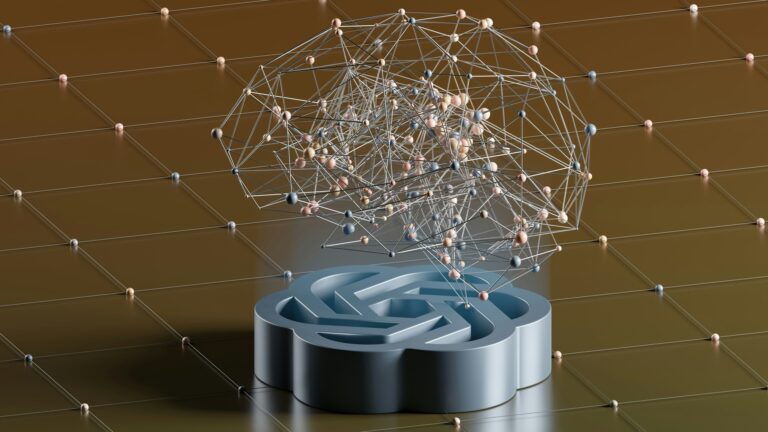
Introduction
Imagine your smartphone instantly recognizing objects in a photo, your car making split-second decisions to avoid obstacles, or a factory sensor predicting equipment failure without relying on the internet. This is the power of Edge AI, a transformative technology that brings artificial intelligence directly to devices at the “edge” of networks, closer to where data is generated. By processing data locally, Edge AI delivers faster, more private, and efficient solutions. This article explores what Edge AI is, how it works, its real-world applications, current trends, and its potential to reshape our connected world, all in an engaging and accessible way.
What is E A?
Edge AI refers to the deployment of artificial intelligence algorithms on devices like smartphones, IoT sensors, or vehicles, rather than in centralized cloud servers. These “edge” devices process data locally, enabling real-time decision-making without constant internet connectivity. This contrasts with traditional AI, which relies on powerful cloud data centers to analyze data.
Key Features of E A
- Local Processing: AI computations occur on the device, reducing dependency on the cloud.
- Low Latency: Immediate data processing enables real-time responses, critical for applications like autonomous driving.
- Privacy: Sensitive data stays on the device, minimizing exposure to external networks.
- Efficiency: Local processing reduces bandwidth usage and energy consumption.
For example, when you use Google’s Live Translate on your phone to translate speech instantly, Edge AI processes the audio locally, ensuring speed and privacy.
How E A Works
Edge AI combines hardware, software, and AI models to process data at the source. Here’s a simplified overview:
- Data Collection: Sensors or cameras on edge devices (e.g., a smart thermostat or drone) capture data like temperature, images, or sound.
- Local AI Processing: Compact AI models, optimized for resource-constrained devices, analyze the data using techniques like machine learning or computer vision.
- Decision-Making: The device acts based on the analysis, such as adjusting settings or sending alerts, without needing to contact a cloud server.
- Optional Cloud Sync: For updates or complex tasks, the device may periodically connect to the cloud, but critical operations happen locally.
For instance, a smart security camera with Edge AI can detect a person in real-time and send an alert to your phone without uploading footage to the cloud.

Real-World Applications of E A
Edge AI is transforming industries by enabling smarter, faster, and more secure solutions.
Consumer Electronics
Smartphones and wearables use Edge AI for features like facial recognition, voice assistants, and health monitoring. For example, Apple’s Face ID processes facial data on the iPhone, ensuring privacy, while Fitbit devices analyze sleep patterns locally.
Autonomous Vehicles
Self-driving cars rely on Edge AI to process sensor data (e.g., from cameras and LIDAR) in milliseconds to navigate roads or avoid collisions. Tesla’s Full Self-Driving system uses Edge AI to make real-time driving decisions without constant cloud reliance.
Healthcare
Edge AI powers wearable medical devices and diagnostic tools. Smart insulin pumps, for instance, analyze blood sugar levels locally to adjust dosages instantly. In hospitals, E A-enabled imaging devices detect abnormalities in X-rays or MRIs on-site, speeding up diagnoses.
Smart Cities
Edge AI optimizes urban systems like traffic management and waste collection. In smart cities, traffic cameras use Edge AI to adjust signal timings based on real-time congestion, reducing delays without cloud latency.
Industrial Automation
Factories use Edge AI for predictive maintenance and quality control. Sensors on machinery, like those in Siemens’ smart factories, analyze vibration data locally to predict failures, minimizing downtime and avoiding costly cloud data transfers.
Current Trends in E A
As of June 2025, Edge AI is advancing rapidly, driven by technological innovations and growing demand for real-time, private solutions. Here are key trends:
Miniaturized AI Models
Advances in model compression, like quantization and pruning, allow complex AI algorithms to run on small devices with limited processing power. Google’s TinyML framework enables AI on microcontrollers in IoT devices.
5G Integration
5G networks enhance Edge AI by providing high-speed, low-latency connectivity for occasional cloud syncs. This synergy supports applications like real-time AR navigation on smart glasses, as seen in Qualcomm’s 5G-enabled chipsets.
Federated Learning
Federated learning trains AI models across multiple edge devices without sharing raw data, enhancing privacy. For example, Google uses federated learning to improve keyboard predictions on Android devices while keeping user data local.
Edge AI Hardware
Specialized chips, like NVIDIA’s Jetson and Intel’s Movidius, are designed for Edge AI, offering high performance with low power consumption. These chips power everything from drones to smart cameras.
Sustainability Focus
Edge AI reduces energy use by minimizing data transfers to the cloud. Companies like Microsoft are integrating E A into IoT devices to optimize energy consumption in smart buildings, aligning with green tech goals.
Benefits of E A
Edge AI offers compelling advantages:
- Speed: Real-time processing eliminates delays, critical for applications like autonomous driving.
- Privacy and Security: Local data processing reduces the risk of breaches or data exposure.
- Cost Efficiency: Reduced cloud dependency lowers bandwidth and server costs.
- Reliability: Devices operate independently of internet connectivity, ensuring functionality in remote areas.
- Scalability: E A supports millions of devices, from wearables to industrial sensors, without overwhelming cloud infrastructure.

Challenges of E A
Despite its promise, E A faces hurdles:
- Limited Computing Power: Edge devices have less processing capacity than cloud servers, requiring optimized AI models.
- Battery Constraints: Running AI on devices can drain batteries, necessitating energy-efficient designs.
- Data Security: While local processing enhances privacy, edge devices must be secured against physical tampering or hacking.
- Development Complexity: Building AI for resource-constrained devices demands specialized expertise.
- Interoperability: Ensuring edge devices work seamlessly with various systems and standards is challenging.
Addressing these requires advancements in hardware, software optimization, and cybersecurity protocols.
The Future of E A
E A is set to redefine technology by 2030, with transformative potential:
- Ubiquitous Intelligence: Everyday devices, from appliances to clothing, will embed Edge AI for smarter functionality.
- Healthcare Revolution: Wearables and implants with Edge AI will enable real-time health monitoring and early disease detection.
- Smart Ecosystems: Cities and homes will use Edge AI to create seamless, efficient systems for energy, traffic, and safety.
- Personalized Experiences: Edge AI will power hyper-personalized apps, like AR shopping or tailored fitness coaching, all processed locally.
Investment in hardware, skills, and ethical frameworks will ensure E A’s benefits are accessible and secure.
Conclusion
EA is revolutionizing how we interact with technology, bringing intelligence directly to the devices we use every day. From autonomous vehicles to smart homes, its applications are vast, delivering speed, privacy, and efficiency. As trends like 5G integration, miniaturized models, and federated learning drive its growth, E A promises a future where real-time, secure, and sustainable solutions enhance our lives. By overcoming challenges like computing limitations and security risks, E A can empower a connected world where intelligence is everywhere, right at the edge.




gxnrpizjvkdvvynjxpugtxppvvsxiz